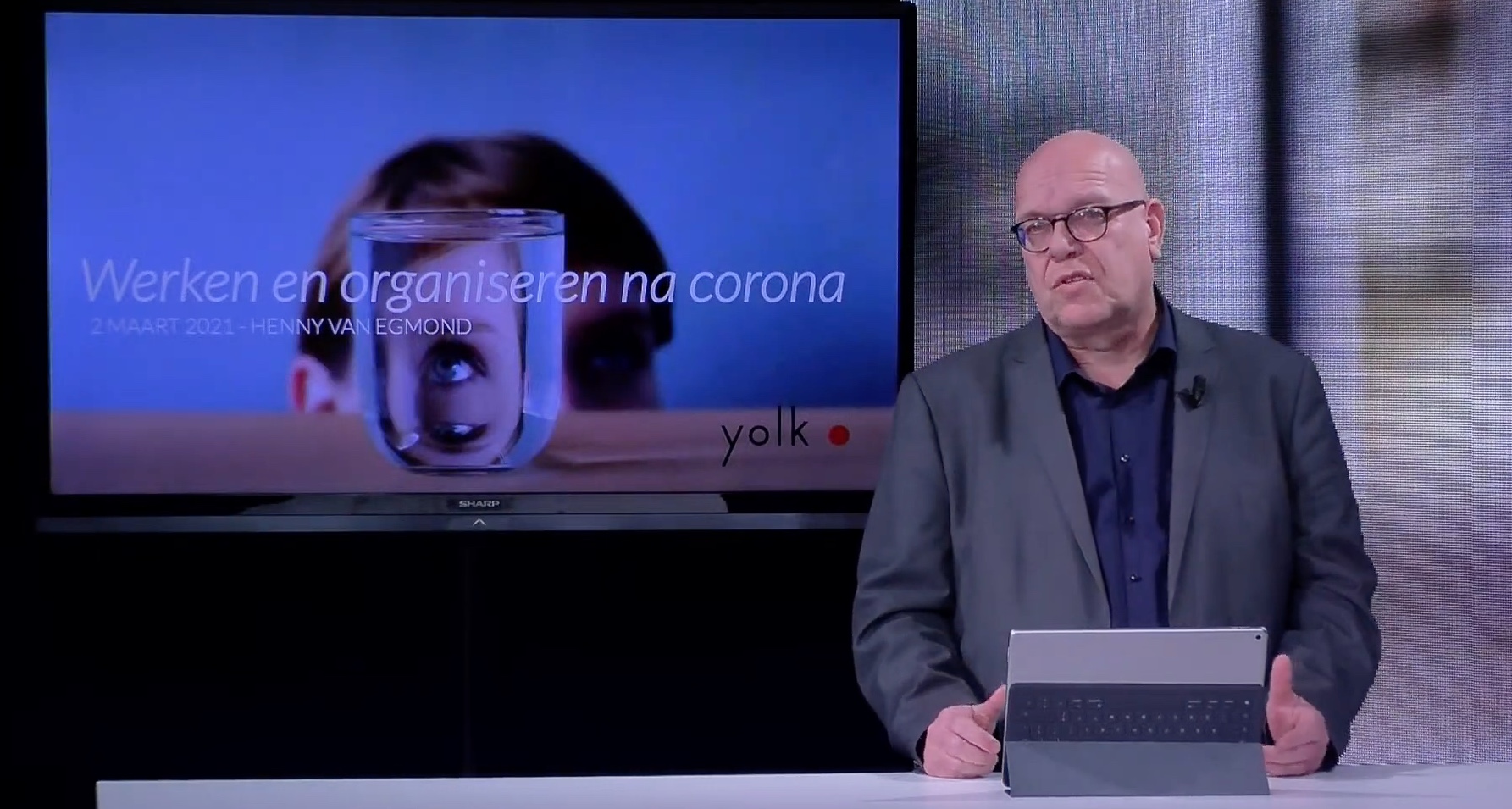This is how you stay connected – also online
Now that we are all missing real contact, it’s time to reassess ‘the good discussion’ from all angles. Are you listening properly?
Corona is accelerating work’s development and nobody knows the whole truth of the changes that are coming. By remaining open to the (different) opinions of others, you remain open for the latest knowledge and insights. This calls for agility, resilience and a positive approach to leadership, culture and organisation. Yolk helps to increase organisation’s ability to change by developing a vision, leadership programmes, cultural chance and innovative styles of working.
My day is completely filled with a succession of minor personal discussions
When asked as to the impact of Covid 19, a top civil servant in our leadership survey said: ‘more than ever, I am busy being visible and remaining connected.’ The head of a department with some 20 professionals working independently: ‘My day is completely filled with a succession of minor personal discussions. The things we would normally discuss on the work floor now all go through me. I can feel the responsibility and am seeking a way to handle it.’
New rituals for social cohesion
There’s no lack of creativity. Going for a walk together, with a 1.5-meter distance, connected by phone , virtual teachers’ rooms, coffee machines and watercoolers in Teams, Webex or Zoom, a special focus on personal wellbeing at the start of each virtual meeting… Corona is generating an explosion of new rituals for social cohesion. If you feel responsible for the wellbeing of your working community, you will appreciate the symbolism. At the same time, you’ll realise it is only part of the solution.
Do you dare to question your way of working?
Room for serendipity and lounging
How – also in the virtual world – do you create a context that makes optimal use of the collective intelligence? How do you remain creative and retain an open perspective when there is so little room for serendipity or lounging around? How do you inject energy and a sense of fun in your team? How can we inspire one another and connect to our organisational objective? And: how do you find out how someone is really doing? If you were thinking about these things before Corona, you’re probably getting to grips with it a little better now. If you weren’t used to holding good discussions in work situations, you’re now having to face it. .
The goings-on between people and what it means
It’s time to reassess ‘the good discussion’ from all angles. The discussion as a means of really being in touch with one another. It’s an artform says Professor Noelle Aarts in her oration from 2015. Noelle is professor in dialogue on complex social issues. In other words: ‘the goings-on between people and what it all means’. Mechanisms that lead to us not really connecting with one another creep into our daily discussions. We are not connecting, but rather trying to convince the other that we are right.
Make an appointment here for a good discussion
Thinking fast and slow
Selective perception, for example. In ‘Thinking fast and slow’ Daniel Kahneman explains that we have two systems of thinking: a fast one (automatic and intuitive) and one that is slow (conscious and rational). Subconsciously, we prefer the fast thinking, as a result of which we are less attentive and miss a lot of information. To compensate, our brains fills the gaps with readily accessible information. If something occurred in a particular way at one stage, we expect it to occur the same way again in the future.
We are hindered by our confirmation bias
Or self-referentiality. The tendency to seek information that confirms our image of reality. We ignore any information that does not align. This also means we prefer communicating with those who agree with us.
He’s not listening. He’s anticipating his opportunity
You can break these patterns by asking questions and demonstrating a genuine interest in those who think differently. It’s the art of listening and giving space. Noelle refers to a well-known quote by children’s author Sjoerd Kuiper: ‘Sometimes you see someone and you think: they’re listening. But them you see the tense muscles in his or her head and you know: he’s not listening. He’s just anticipating his opportunity. He’s waiting for the moment that he can hijack the story and so take over. Even the slightest pause can be enough. or the smallest word can be the entry into the ‘conversation’.’
Listen and connect
This is the ‘download’ listening strategy as explained by Otto Scharmer, originator of transformation model Theory U that we apply 80% of the time: listening to confirm what we already know and believe. Scharmer mentions three other strategies: Focused listening to discover information that deviates from what we know so that we can add it to our existing knowledge. Empathetic listening in which, without judgement, we take on the perspective of the other with the aim of better understanding your discussion partner. And finally, there is generative listening: you focus fully on the person who’s talking, thereby generating a connection between the storyteller and the listener.
It’s not about winning. It’s about the discussion.
Noelle Aarts states that a good discussion is based on four main elements: handling differences and asking about them, reflecting on your and your partner’s conversational behaviour, the art of listening and taking responsibility for the conversation. It’s not about winning, but rather about the discussion itself. You seek out one another’s perspectives, reasoning. Recognition is essential here: accepting that your truth may differ from mine. You indicate that you are hearing the other, and so move towards one another. Connection.
Escape your bubble and look around you









